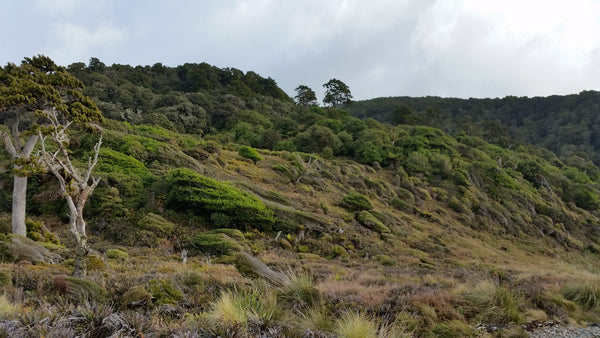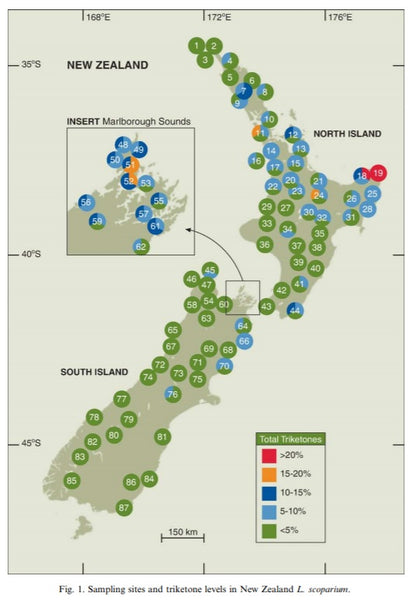East Cape mānuka oil
In this article, we take a closer look at the history of mānuka essential oil from the East Cape of New Zealand's North Island.
For more information on other things to do with mānuka oil, check out the links below:
- What is mānuka oil?
- Traditional uses of mānuka
- Mānuka oil health properties
- Mānuka oil uses
- Mānuka vs. kānuka
How was East Cape mānuka oil discovered?
Mānuka oil is relatively new to the world of aromatherapy and natural medicine. Research into East Cape mānuka oil began in the late 1980s when a Māori trust in the East Cape region of the North Island contacted Alan Cooke at the Cawthron Institute. The trust owned a large amount of land that contained mānuka trees. They were considering whether to chop the trees down and use the wood for things like furniture and flooring, or find another purpose for these resources. Removing the trees would result in lots of timber being harvested. However, the amount of leaves and foliage on mānuka trees would have made this quite a challenging endeavour.

In order to see if there was any value that could be harvested from the foliage, they decided to extract a sample of mānuka essential oil and get it tested for antibacterial activity.
Initial research sparks further investigation into East Cape East Cape mānuka oil
To cut a long story short, the test results were incredible. Further research was undertaken, and a company, Tairawhiti Pharmaceuticals was setup to sustainably produce mānuka oil. Today, around 90% of mānuka oil in New Zealand is made by two companies on the East Cape.
There is a much larger body of evidence to support the health benefits of East Cape mānuka oil compared to mānuka oils harvested from other parts of New Zealand. Research efforts have mainly focussed on a group of compounds found in East Cape mānuka oil called triketones.
Mānuka oil produced in other parts of New Zealand also has a range of great health benefits thanks to other compounds such as monoterpenes and sesquiterpenes. However, most mānuka oil from other parts of the country contains less than 5% triketones. The chemical composition of mānuka oil varies greatly throughout the country.
Image adopted from: Douglas MH, van Klink JW, Smallfield BM, Perry NB, Anderson RE, Johnstone P, Weavers RT. 2004. Essential oils from New Zealand manuka: triketone and other chemotypes of Leptospermum scoparium. Phytochemistry. 65: 1255-1264.
Triketones:
“Mānuka oil, particularly the triketone rich chemotype, has activity against pathological bacteria, e.g. Staphylococcus, Listeria, Enterococcus and some fungi, e.g. Trichophyton, Microsporum, as well as anthelmintic and insecticidal activities. The unique activity of the East Cape mānuka oils against Gram positive bacteria, e.g. Staphylococcus aureus and its antibiotic resistant strain MRSA, has been conclusively proven to be due to the presence of triketones.”- source
In vitro studies (tests in a controlled environment) also found East Cape mānuka oil to be effective at killing herpes types 1 and 2 (HSV1 and HSV2) . The triketones that East Cape mānuka oil contains are: leptospermone, isoleptospermone, flavesone and grandiflorone. Generally, East Cape mānuka oil has at least 25% triketones (and sometimes up to 40%).
The health properties of mānuka oil, and East Cape mānuka oil in particular are wide ranging and powerful. Click here to shop through our range of premium East Cape mānuka oil personal care products, or click here to buy pure East Cape mānuka oil from our sister brand, Mānuka Sensations.


